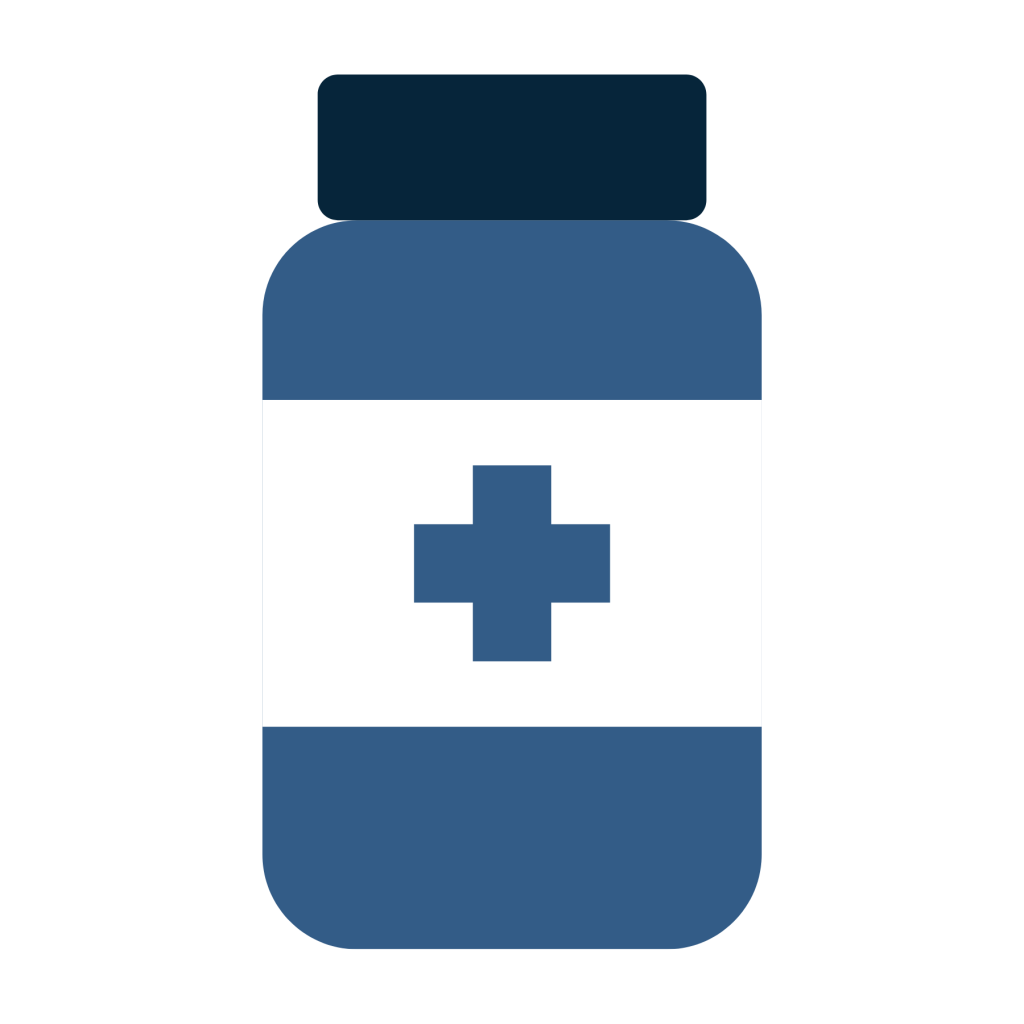Substance use prevention uses evidence-based practices to help prevent substance misuse from occurring. Prevention work includes efforts to increase community awareness, offer programming for multiple age groups, reduce illegal drug availability, and collaborate with community members, law enforcement, healthcare, and public health.
Primary prevention addresses factors known to increase the risk for youth and others trying substances (ex. feeling depressed) and foster a community of resilient people less likely to use substances (ex. caring adults who listen to youth).
Strategic Prevention Framework

The Strategic Prevention Framework is used to design, execute, and appraise programs and preventative interventions in communities. The process begins with Assessment to determine the community needs. It concludes with Evaluation to collect quantitative and qualitative data to confirm programming was effective or to make needed changes. At its center is sustainability and cultural competence to ensure substance use prevention efforts are as long-term and as relevant to their audiences as possible.
Maine’s Substance Use Prevention Program (Click to expand)
To carry out this work using the Strategic Prevention framework, Maine CDC funds 20 local community partners who are working in communities to address primary and secondary prevention efforts. They form partnerships with their neighbors, educators, healthcare workers, law enforcement, local retailers and restaurant owners, and more, to come together to address community health issues. Learn more about what prevention work happens in your area by visiting their headquarters at You Are Prevention.
Prevention Data Resources:
The SEOW: The State Epidemiological Outcomes Workgroup provides a dashboard of Maine substance use data to help track progress in reducing underage and high risk drinking, marijuana use, and prescription drug misuse. It takes data from law enforcement resources and departments such as the Department of Transportation and Bureau of Highway Safety, and the state surveys described below.
MIYHS: The Maine Integrated Youth Health Survey is a statewide survey administered every two years since 2009. Its purpose is to quantify the health-related behaviors and attitudes of 5th through 12th graders by direct student survey. The survey collects information on student substance use, substance use risk factors, perceptions related to substances, and many other health factors. The survey is done through a collaborative partnership between Maine Center for Disease Control and Prevention and Maine Department of Education.
BRFSS: The Behavior Risk Factor Surveillance System is a national survey administered on an ongoing basis by the U.S. Centers for Disease Control and Prevention (U.S. CDC) to adults in all 50 states and several districts and territories. The instrument collects data on adult risk behaviors, including substance use.
Resources:
211 Maine – Call, Text, or visit 211 online for the largest database available to connect people to services and public health information. It is free and confidential.
Alcohol Screening – This online quiz is a tool for reviewing your drinking habits and how they may affect your health and the health of your loved ones.
CACDA – Community Anti-Drug Coalitions of America is a support system for substance use prevention coalitions, offering resources, strategies, and success stories to reach every age group and culture.
Eyes Open Campaign – This campaign focuses on awareness and information about opioid misuse, emphasizing that an opioid use disorder can happen to anyone and how to practice safe storage and drug disposal to protect yourself and others.
Maine Prevention Store – This site offers free print materials and digital downloads designed to improve health and help to prevent tobacco use, substance use, and suicide in Maine.
Party Smarter – Seeks to provide an example of what healthy adult consumption of alcohol should look like, and tips to help make healthy decisions.
General Contact:
Tobacco and Substance Use Prevention and Control
Phone: (207) 287-4627
E-mail: tsup.dhhs@maine.gov
TTY: Maine relay 711
Law enforcement prevents drug misuse and overdose by making illegal drugs less available.
The Maine Drug Enforcement Agency (MDEA) addresses the drug epidemic in the state by making deadly illegal drugs, such as fentanyl and fentanyl analogs less available. They also focus their investigative efforts on removing drug traffickers and dealers from our communities.
This metric tracks the grams of drugs seized by MDEA, the pharmaceutical dosage units of drugs seized by MDEA, and the drug related arrests made by MDEA by substance. This metric is an indicator of the illicit substances found in Maine by law enforcement officers as well as the quantity of illicit substances and traffickers of illicit substances removed from Maine’s drug trade by MDEA. MDEA data is reported annually. For full reports visit the Maine Drug Enforcement Agency Website’s News and Events Page.
Source: Maine Drug Enforcement Agency.
Source: Maine Drug Enforcement Agency.
Source: Maine Drug Enforcement Agency.
Source: Maine Drug Enforcement Agency.
The Maine State Bureau of Identification collects and maintains criminal history information throughout the State including drug related arrests. This metrics tracks the number of drug arrests by substance and the number of opioid arrests by county. It does not include federal charges or dispositions. It includes data for all participating local, county, and statewide law enforcement agencies in Maine. This data is reported monthly.
Opioid Arrests in Maine, 2021
Source: New England High Intensity Drug Trafficking Areas (NE-HIDTA).
The Maine Department of Corrections (MDOC), which operates six adult facilities throughout Maine aims to reduce the likelihood that juvenile and adult offenders will re-offend, by providing practices and identifying individuals who could benefit from programs and services which are evidence-based and which hold offenders accountable.
This metric tracks the number of residents admitted to the MDOC for new sentences with a primary sentence for a drug crime. The preponderance of primary sentences are for furnishing drugs. Only 4.41% of men and 2.33% of women incarcerated during 2020 were charged with the primary offense of drug possession. This metric is an indicator of individuals incarcerated for drug-related crime. This data is reported annually.
Source: Maine Department of Corrections. Annual Report on Substance Use, 2020.
DEA National Prescription Drug Take Back Day addresses misuse of controlled prescription drugs.
The Drug Enforcement Agency’s National Prescription Drug Take Back Day addresses a crucial public safety and public health issue. According to the 2018 National Survey on Drug Use and Health (NSDUH), 9.9 million Americans misused controlled prescription drugs. The study highlighted that the majority of misused prescription drugs were obtained from family members or friends, often from a home medicine cabinet.
Mainers play an important role in preventing the diversion of prescription drug for misuse. Since the inception of the Maine Prescription Drug Take Back Day in 2010, Maine has ranked #1 in the United States per capita with the total pounds of medication collected. In total, Mainers have turned in 503,678 pounds of prescription drugs that had the potential to be misused by family and friends.
This metric tracks the pounds of prescription drugs taken into custody by the DEA during Take Back Day. The data is compiled by the Federal Drug Enforcement Agency. It is reported semi-annually. For national data regarding the DEA’s Prescription Drug Take Back Days visit DEA Diversion’s website.
Drugs Collected during the Prescription Drug Take Back Day in New England, October 2021. Hover over each state to view pounds of prescriptions collected.
Source: United States Drug Enforcement Administration.
Source: United States Drug Enforcement Administration.
Maine is dedicated to reducing the oversupply of prescription opioids by improving the safety of opioid prescribing.
To help reduce opioid-misuse and opioid overdose in the state of Maine, the Prescription Drug Monitoring Program receives data regarding controlled substances from prescription dispensers that can be accessed by prescribing providers. Since 2015, the number of morphine milligram equivalents prescribed in Maine has decreased as has the number of patients prescribed opioids and the number of opioid prescriptions dispensed to patients.
This metric tracks the morphine milligram equivalents prescribed by providers, the number of patients receiving opioid prescriptions from their providers, and the number of opioid prescriptions dispensed in the State of Maine. The data is provided by the Office of Behavioral Health. The data is reported quarterly. For interactive data regarding drug overdoses in Maine visit the Maine CDC Drug Overdose Morbidity and Mortality dashboard.
Source: Maine Prescription Drug Monitoring Program.
Electronic prescribing of opioids enhances the ability for the State to prevent misuse.
As of August 1, 2017, prescribing clinicians in Maine are required to prescribe any opiate medication by electronic means. This measure enhances the ability of the State to electronically track prescriptions of opiate medications and avert potential abuse, misuse and diversion. The data is provided by the Office of Behavioral Health. The data is reported annually.
Source: Maine Office of Behavioral Health, Maine Prescription Monitoring Program 2020 Annual Report.
Benzodiazepines and stimulants are emerging as causes of overdose death alone or in combination with other drugs and alcohol.
Long-term use of benzodiazepines can cause physical dependence, addiction, and overdose death. Benzodiazepines used alongside pharmaceutical and non-pharmaceutical opioids increases the risk of respiratory suppression as well as nonfatal and fatal overdoses.
Stimulants elevate heart rate, blood pressure, and breathing and can cause paranoia and anxiety. Excessive use and non-medical use of stimulants can be dangerous and deadly damaging the respiratory, cardiovascular, and central nervous systems causing irregular heartbeat, heart failure and seizures among other side effects.
This metric tracks the number of patients receiving benzodiazepines and stimulants from their providers and the number of benzodiazepine and stimulant prescriptions dispensed in the State of Maine. The data is provided by the Office of Behavioral Health. The data is reported quarterly. For interactive data regarding drug overdoses in Maine visit the Maine CDC Drug Overdose Morbidity and Mortality dashboard.
Source: Maine Prescription Drug Monitoring Program.
Source: Maine Prescription Drug Monitoring Program.






